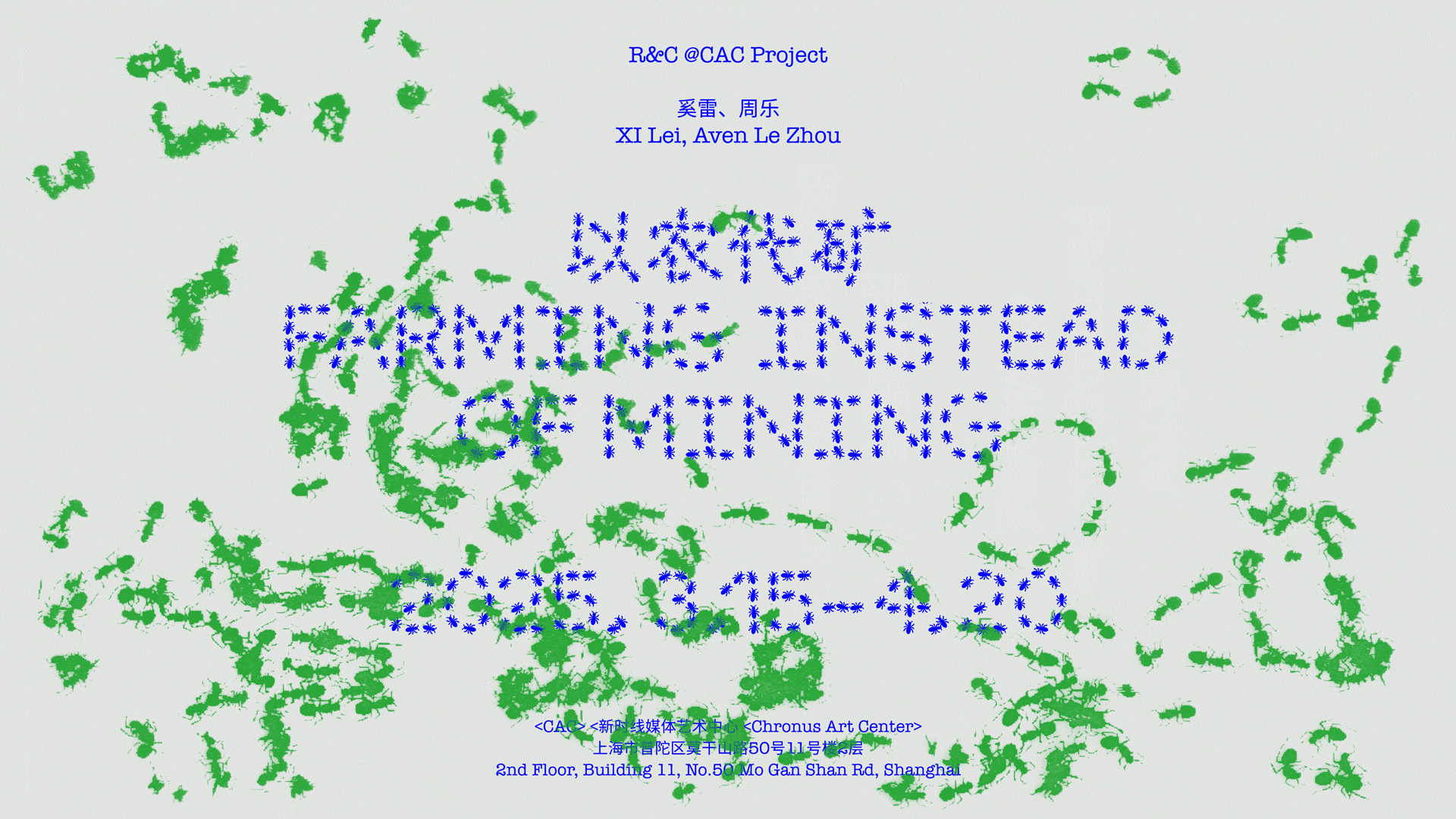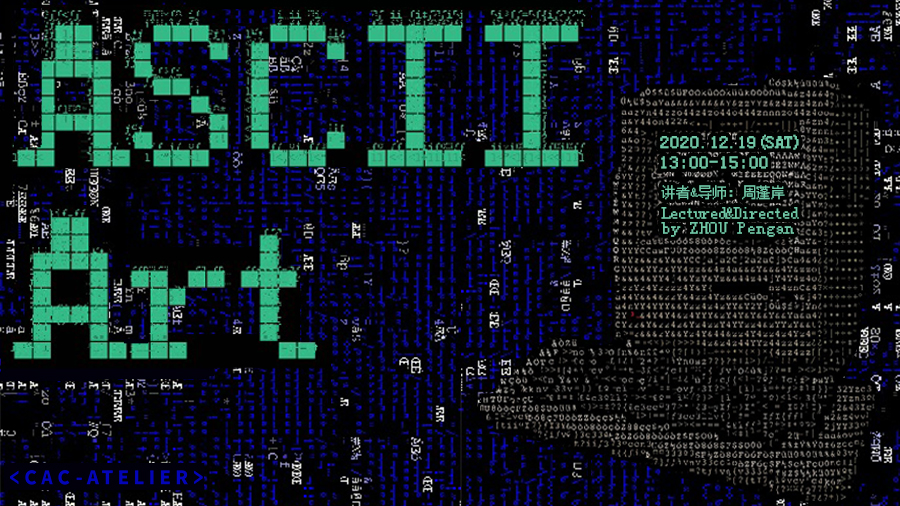Chronus Art Center (CAC) is pleased to present Fernsehturm, an exhibition by the German artist Wolfgang Staehle.
Fernsehturm features two cinematic components that resonate in the form of live transmission of the images of and continuously captured from inside the Berlin TV Tower. Originally built as an East Block Icon and electronic panopticon for spying on both East and West Berlin, the Fernsehturm exists in a distinct cultural and technological realm and, whether by design or by coincidence, refers beyond itself not only to the TV tower of signs, but to the historical, economic and military projection of power. A mechanical, digitized exercise in endless recording, the Fernsehturm displays raw technological capability, simply a view, a camera position, and the image being constituted live over the Internet. This continuous view of the Berlin TV tower enabled by the distribution system of the network critically place the entire system of the recording, transmission and reception of electronic images under an implicit and open scrutiny, offers a symbolic mode of human eternity, a verification through surveillance of the presence of the tower with its monumental banality stripped of ostentatious attempts at any interesting or spectacular visual experience commonly assumed from the evocation of the technological scale.
With a particular synergy between the technological and social connections mediated by the Internet, Staehle’s work is to be subsumed by the world rather than to dominate the world, and sees a positive correlation between the object and the subject through the phenomenological approach of being-in-the-world1.
Fernsehturm
Digital Chronophotography (Live Transmission)
Wolfgang Staehle's work Fernsehturm is a reprise of a work first executed in 2001 as part of an exhibition at Postmasters gallery in New York City entitled 2001. Fernsehturm is a live transmission of the upper part of the iconic Berlin TV tower built in the 1960s by the authorities of the German Democratic Republic. In its new iteration at the Chronus Art Center, the live image of the Berlin TV tower is taken from the opposite angle and in higher resolution. It will be accompanied by a video on the opposite wall showing a view of the city from the revolving restaurant platform. The works have been realized in collaboration with Jan Gerber and Asmus Jaap, Berlin.
The time lapse photographic sequences are presented here in real time – a rate so methodical that it denudes the image of its cinematographic aspect, while accentuating it pictorially. By allowing us to exact the machinations of the nature (and building), through figuratively arresting time, a perceptual shift is created that video does not pose, and thereby realigns our relationship with the real. Each contiguous moment pre-empts the prior, switching out the obsolete image for a perpetually updated "now"2.
Notes
(1) http://www.johnmenick.com/writing/wolfgang-staehle
http://post.thing.net/node/683
(2) Kelly Gordon, "Projecting Dreams," The Cinema Effect: Illusions, Reality, and the Moving Image, Hirshhorn Museum, exhibition publication, 2008.
About the Artist
Wolfgang Staehle was born in Stuttgart, Germany in 1950. He attended the Freie Kunstschule, in Stuttgart, and in 1976 he moved to New York to attend the School of Visual Arts, New York (BFA) where he studied with Joseph Kosuth (Conceptual Art), Marshall Blonsky (Semiotics), Robert Mangold (Painting), Jackie Winsor (Sculpture), Richard Van Buren (Sculpture), Storm De Hirsch (Experimental Film), Todd Watts (Photography), Ed Bowes (Video), Anina Nosei (Art History), and Jeanne Siegel (Art History).
After a successful career in various New York and European galleries in the 1980s, Staehle decided to work collectively, and in 1991 he founded The Thing, an innovative online forum for artists and cultural workers. The Thing began as a Bulletin Board System (BBS), a form of online community dialogue used before the advent of the World Wide Web. By the late 90s, The Thing grew into a diverse online community made up of dozens of members' Web sites, mailing lists, a successful Web hosting service, a community studio in Chelsea, and the first Web site devoted to Net Art, bbs.thing.net.
In 1996, Staehle began to produce an ongoing series of live online video streams. The first of these works was Empire 24/7, a continuous recording of the top one-third of the Empire State Building that is broadcast live over the Internet. Staehle has followed Empire 24/7 with online streams of other buildings, landscapes and cityscapes such as Berlin's Fernsehturm, the Comburg Monastery in Germany, lower Manhattan before and after 9/11, and a Yanomami village in the Brazilian Amazon. He continues to expand this series while serving as the Executive Director of The Thing.
Wolfgang Staehle is represented by Postmasters Gallery, New York.
About the Series
Fernsehturm is the second exhibition in a series of screen-based works organized by the Chronus Art Center. Conceived by ZHANG Ga, who has recently taken the helm of artistic direction at CAC, this exhibition series examines, through seven international artists’ projection works, each presented in a month-long solo exhibition, dynamically generated audiovisual systems that artists have custom-made, real-time transmitted images which demand protocols other than those readily available, idiosyncratic animation techniques for which given rules will be rewritten, and subject matters estranged from the populist safe haven. The artists presented in this series often exploit an algorithmic logic distinct from the predominant language that speaks the parlance of video art—software presets and editing routines for visual manipulation and content authoring—thereby disrupting and sabotaging the economy and the ideology of image production implicit in the very tools and means that produce narrative and construct meaning. In doing so, they have developed a new aesthetic sensibility beyond the received notion of video art as such, extending the rich tradition of media art seen in the pioneering experiments of Walter Ruttmann and Dziga Vertov of the 1920s; by the canonical works of Michael Snow, the Vasulkas and Nam June Paik, to name just a few, of the mid-century; to the digital contemporary, and opened new potentials for tending individuated perceptual spaces that can acculturate the spectacles of cosmic magnitude and the facticity of the everyday, imagined or otherwise.
Series Artists
Michael Joaquin Grey
Wolfgang Staehle
George Legrady
Casey Reas
Marina Zurkow
Jim Campbell
AL and AL










